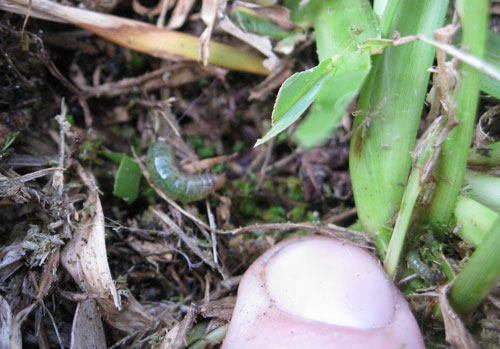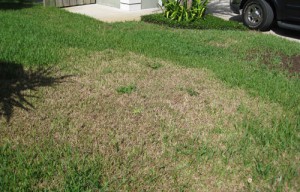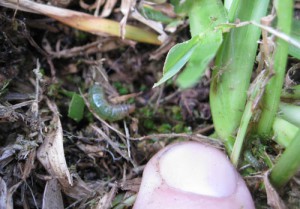
What’s Eating My Lawn?
What’s eating my lawn? Does your grass look ragged in areas, as if someone randomly used a weed-eater here and there? Are you noticing brown patches that have a closely clipped appearance compared to other areas of your lawn? Your turf may be playing host to Tropical Sod Webworm.
Sod webworm damage is subtle at first. You have to look closely to notice larval feeding damage. However, an easy indication of their presence is the light tan/brown colored moths, which are the adult stage of the pest. You may see them fly up as you walk through your lawn or if you disturb a nearby bush. The moths do not cause any damage to the turf, but they are depositing eggs, which will result in their offspring, the caterpillars, who do all the chewing damage.
The larvae are gray-green and have spots on each segment. The mature larvae can be up to 1 inch in length. Larvae will curl up in the soil during the day and feed at night. So if you happen to notice caterpillars feeding during the day, it’s probably not sod webworm. You will notice chewed notches along the leaf blade, holes in the leaf and even leaf blade skeletonizing. The older the larvae are, the more they will eat. Damage may start out as a ragged appearance in your turf, which can be hard to diagnose. However, if left unchecked, sod webworm can cause considerable injury to your lawn.
If you are uncertain of their presence you can always use a soap drench to flush out larvae. Mix 2 tablespoons of dish soap with 2 gallons of water and pour it over a damaged area (about 3 square ft.). The soap mixture will irritate the pest and bring them to the surface so you can easily identify them. If nothing appears in the area tested move to another damaged site and try again. Here is a link to a video that will give more information on identifying Tropical Sod Webworm.
Tropical Sod Webworm is considered a pest of all warm-season turfgrasses. However, St. Augustinegrass is most commonly affected. The best way to prevent a pest infestation is to use proper cultural maintenance practices for your lawn type. However, if the pest does appear, chemical control should be targeting the larvae stage of the pest. There are multiple products marketed to control lawn caterpillars. However, you may want to consider using B.t. (Bacillus thurengiensis), which is a bacterium that will only harm caterpillars and not bother beneficial insects that may be in your lawn. For more information you can contact your local extension office.


